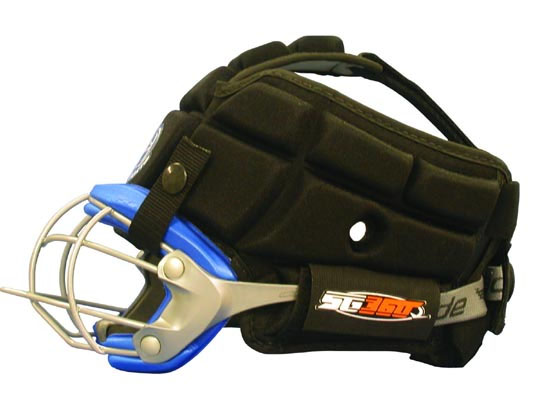Quest for Safety May Bring More Dangers

In Florida, girls’ lacrosse helmets are required. Many are asking if this is the right direction for the sport.
“I was in college and my team and I were celebrating after a goal. Back then, we didn’t wear goggles, so when my teammate’s stick came around and whacked me in the eye, I got a black eye. I was proud of my black eye,” recalls Mrs. Kris Schulte. “I thought it made me look tough.”
Mrs. Schulte is the head girls lacrosse coach at The Lawrenceville School in Lawrenceville N.J. Her story is common. Lacrosse is a popular sport with around 750,000 male and female players in the U.S. according to “U.S. Lacrosse Magazine.” And part of the sports appeal is the physicality and action; however, lacrosse’s physicality is also bringing controversy.
Lacrosse is one of the few sports in which the rules and gameplay differ greatly between boys and girls. In boys’ lacrosse, players are required to wear padding, helmets, and gloves; girls, however, are only required wear a mouthguard, eye mask, and shin guards.
Recently, the state of Florida has made it a requirement for high school girls to wear protective headgear while playing. In the wake of this decision, many disagreements regarding whether girls should wear more protective headgear.
Caitlin Germishuys, an eighth grader at Coleytown Middle School, is a dedicated player on the A travel girls’ lacrosse team in Westport.
“Due to the rules of girls’ lacrosse, it is a much less violent game compared to the boys. Headgear isn’t required for girls because there isn’t as much contact that could harm someone,” Germishuys said. “Girls shouldn’t need to wear protective gear on their heads. Girls’ lacrosse is all about technique. Adding pads could make it more violent.”
According to NPR affiliate WBUR, girls’ lacrosse players can’t play more aggressively unless the officials, the coaches, their parents, the policymakers allow them to do so. And it’s true. In women’s lacrosse, body checking isn’t allowed, collisions are minimized, and contact with the head is off limits, which means accidentally bringing a stick within seven inches of another player’s head is a major foul. Unless the rules change, the sports should stay the same, even with new head gear.
However, some people aren’t so sure because of the “gladiator effect,” when athletes believe that they are invincible because of their gear and may play in a more dangerous way. Critics of new headgear say that the protective headgear may ironically cause more injuries.
“Hard helmets will change game and make it rougher,” Schulte said. “It would make girls’ lacrosse more like the boys’ game. When we get to that point, the uniqueness and nature of women’s lacrosse will be lost forever.”
Concussions, as they are in a lot of contact sports these days, are a problem is girls’ lacrosse. Girls’ lacrosse players wield reinforced aluminum sticks and fire 60-mile-per-hour shots with a hard, unyielding ball says the “New York Times.” In addition, in girls’ lacrosse plays, 64 percent of their injuries are being struck in the head by either the lacrosse ball or the stick says WBUR.
Girls’ lacrosse players all over the country are worried that increased headgear use may create a slippery slope of rougher play, which could eventually lead to arm, shoulder and chest padding — equipment already worn by the boys. In boys’ lacrosse 75 percent of player concussions are from player-player contact. According to the “New York Times,” some of girls’ lacrosse’s longest-tenured coaches and officials worry that the headgear, though optional for now, will ultimately ruin the nuanced spirit of the game, which has been played in North America for about a century.
“Protective headgear needs to be added carefully,” Schulte concludes. “We have to make girls’ lacrosse safer without changing the game. That will take time and patience. What we need is the help of women who know the game and who want to make it safer while protecting the way it is played.”


